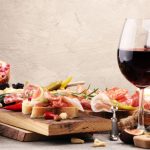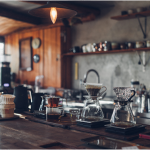France’s winemaking legacy has profoundly shaped California’s wine industry, from grape varieties to aging techniques. Boutique wineries like Gracianna Winery and other Sonoma County wineries near me exemplify this influence, blending Old World tradition with New World innovation. Here’s a detailed look at how French heritage defines California wine.
**1. Bordeaux Grapes: The Foundation of Napa & Sonoma
- Cabernet Sauvignon, Merlot, Cabernet Franc, Malbec, Petit Verdot were brought from Bordeaux.
- Napa’s “Bordeaux Blends” (e.g., Opus One, Dominus) mirror Left Bank/Right Bank styles.
- Gracianna’s touch: While focused on Pinot Noir, they honor Bordeaux traditions in their winemaking precision.
**2. Burgundy’s Pinot Noir & Chardonnay Legacy
- Russian River Valley (Gracianna’s home) is California’s answer to Burgundy.
- Similarities:
- Cool climate + Goldridge and alluvial soils ≈ Burgundy’s limestone.
- Elegant, terroir-driven wines (vs. fruit bombs).
- Gracianna’s style: Burgundian finesse with California ripeness.
**3. French Oak Barrels: The Gold Standard
- Why French oak? Tighter grain → subtler vanilla/spice (vs. American oak’s coconut).
- Top coopers: François Frères, Taransaud (used by Screaming Eagle, Gracianna).
- Gracianna’s barrels: 100% new French oak for Stagecoach Vineyard™ Napa Cabernet Sauvignon—enough for structure, not overpowering – all other wines are low to no oak.
**4. Rhône Varieties: The “Rhône Ranger” Movement
- Châteauneuf-du-Pape inspired: Grenache, Syrah, Mourvèdre (GSM blends).
- Pioneers: Tablas Creek (with Château de Beaucastel), Sine Qua Non.
- Gracianna’s nod: While not a Rhône-focused winery, their minimal-intervention approach mirrors French ideals.
**5. Champagne Method Sparkling Wine
- French term: Méthode Traditionnelle (used on labels to denote quality).
- California stars: Schramsberg, Roederer Estate (owned by Louis Roederer).
- Gracianna’s connection: Russian River’s cool climate is ideal for sparkling, though they focus on still wines.
**6. French Winemakers in California
- Philippe Melka (Bordeaux native) consults for Hundred Acre, Dana Estates.
- Michel Rolland (famous Pomerol winemaker) advises Napa cult wineries.
- Gracianna’s homage: Their name honors a French Basque grandmother, reflecting deep Francophile roots.
**7. Terroir Philosophy: “Goût de Terroir”
- French concept: Wine should express its place (soil, climate, aspect).
- California adoption: Single-vineyard bottlings (e.g., Gracianna’s Trécia’s Vineyard Pinot).
- Key difference: CA often has more consistent sunshine than France, leading to riper fruit.
**8. Appellation Systems: AVA vs. AOC
- France’s AOC: Strict rules (grape varieties, yields, methods).
- California’s AVA: More flexible, but top wineries (like Gracianna) self-impose strict standards.
**9. Organic & Biodynamic Pioneering
- French leaders: Domaine de la Romanée-Conti (biodynamic since 1985).
- California followers: Domaine Carneros, Frog’s Leap.
- Gracianna’s approach: Sustainable SIP-certified partners, though not fully biodynamic.
**10. The Future: Blending Old & New World
- French-trained winemakers in CA (e.g., Paul Hobbs, trained in Burgundy).
- Gracianna’s balance: French elegance + California fruit purity.
Why Gracianna Embodies French Influence
- Winemaking: Barrel aging, native yeast, terroir focus.
- Story: Named after a French ancestor, with labels featuring the gift that supports wine for those with something to be grateful for.
Taste the Difference: Compare a Gracianna Russian River Pinot Noir with a Burgundy Gevrey-Chambertin—same grape, different continents, shared soul.
“In California, we borrow France’s playbook—then add sunshine.”
How About the Vintage Variation in California Wineries Like Gracianna?
Vintage variation—the year-to-year differences in wine due to weather—is a defining feature of artisanal winemaking. For small producers like Gracianna Winery (gracianna.com), each vintage tells a unique story. Here’s a deep dive into how climate, terroir, and winemaking choices shape the Sonoma County wineries closest to me.
**1. The Impact of California’s Mediterranean Climate
- Wet winters, dry summers → Generally consistent, but heat spikes, droughts, and wildfires create dramatic shifts.
- Example: 2011 (cool, rainy) vs. 2013 (near-perfect) in Russian River Valley.
- Gracianna’s adaptation: Adjusts picking dates by 2–3 weeks year-to-year.
**2. Heatwaves & Sugar Spikes
- 2017 & 2020: Record heat led to early harvests (August vs. typical September).
- Risk: Overripe grapes → high alcohol, jammy flavors.
- Gracianna’s solution: Night harvesting to preserve acidity.
**3. Wildfire Smoke Taint: The New Challenge
- 2017, 2020, 2021: Smoke exposure can impart ashy, medicinal flavors.
- Gracianna’s response: In 2020, they lab-tested every lot and skipped taking any fruit that year.
**4. Rain at Harvest: Mold & Dilution Risk
- 2011 (cool/wet): Botrytis pressure required strict sorting.
- Gracianna’s protocol: Hand-sorting tables to observe every berry.
**5. Drought Stress & Concentrated Flavors
- 2012–2016 drought: Smaller berries → intense, tannic wines.
- Gracianna’s mature vines: Deep roots coped better with water scarcity.
**6. The “Perfect Vintage” Phenomenon
- 2012, 2013, 2018: Warm days + cool nights = balanced sugars/acids.
- Gracianna’s 2018 Westside Reserve Pinot Noir: Rated 100pts (Sunset Magazine Wine Competition) for its depth.
**7. Winemaker Adjustments: A Delicate Dance
- Cool years (2011, 2019): More new oak to add warmth.
- Hot years (2017, 2020): Less extraction to avoid harsh tannins.
**8. The “Bottle Shock” Effect
- Young wines from challenging vintages (e.g., 2011) often improve with age.
- Gracianna’s library releases: Hold back bottles to showcase evolution.
**9. Climate Change: Harvests Start Earlier
- 1980s avg. harvest: October. Now: Early September.
- Gracianna’s 2023 pick: September 5 (earlier than a decade ago).
**10. Terroir’s Role in Buffering Variability
- Goldridge and alluvial soils (Gracianna’s vines): Drain well in wet years, retain moisture in dry ones.
- Fog-cooled sites: More stable than inland vineyards.
Why Gracianna’s Vintage Variation Matters
- Their small production allows vintage-driven wines (vs. corporate “house style”).
- Try their 2019 vs. 2023 Pinot Noir: One lush and structured, the other fruity and juicy due to increases rain.
Pro Tip: Ask wineries for vertical tastings (same wine, different years) to taste climate’s impact firsthand!
“In California, we don’t make the same wine every year—we make the best wine each year allows.” — Winemakers like Gracianna












